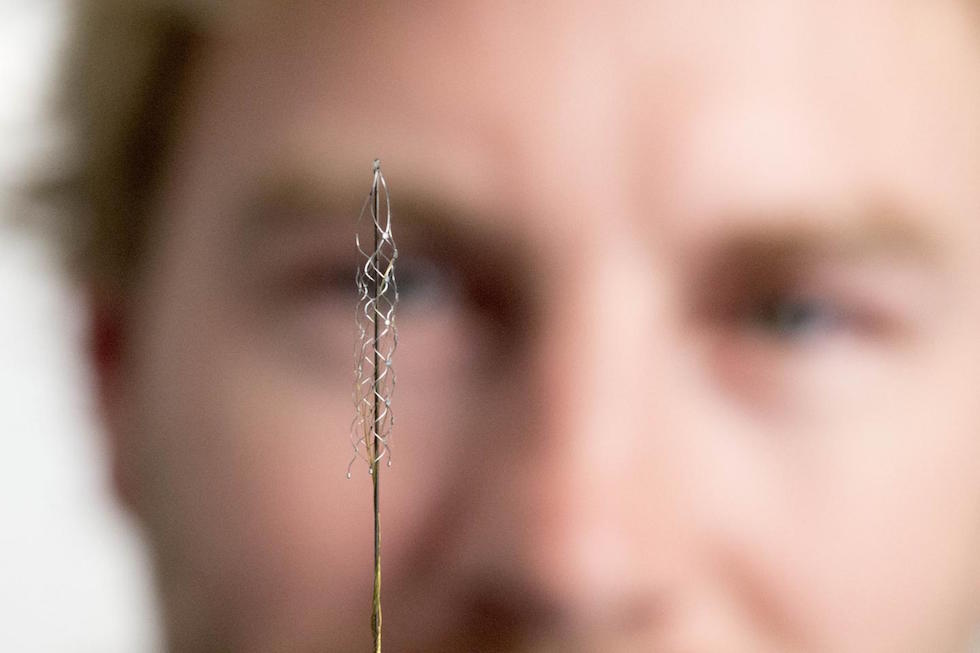
The stentrode is a stent-based electrode implanted within a blood vessel in the brain that records the type of neural activity that has been shown in pre-clinical trials to move limbs through an exoskeleton or to control bionic limbs.
The new device is the size of a paperclip and will be implanted in the first in-human trial at The Royal Melbourne Hospital in 2017. The participants will be selected from the Austin Health Victorian Spinal Cord Unit.
The results, published in Nature Biotechnology, show the device is capable of recording high-quality signals emitted from the brain's motor cortex, without the need for open brain surgery.
Principal author and Neurologist at The Royal Melbourne Hospital and Research Fellow at The Florey Institute of Neurosciences and the University of Melbourne, Dr Thomas Oxley, said the stentrode was revolutionary.
"We have been able to create the world's only minimally invasive device that is implanted into a blood vessel in the brain via a simple day procedure, avoiding the need for high risk open brain surgery,” Dr Oxley said in a statement. "Our vision, through this device, is to return function and mobility to patients with complete paralysis by recording brain activity and converting the acquired signals into electrical commands, which in turn would lead to movement of the limbs through a mobility assist device like an exoskeleton. In essence this a bionic spinal cord."
There are 20,000 Australians with spinal cord injuries, with the typical patient a 19-year old male, and about 150,000 Australians left severely disabled after stroke.
Dr Nicholas Opie, co-principal investigator and biomedical engineer at the University of Melbourne, said: "Utilising stent technology, our electrode array self-expands to stick to the inside wall of a vein, enabling us to record local brain activity.
“By extracting the recorded neural signals, we can use these as commands to control wheelchairs, exoskeletons, prosthetic limbs or computers.
"In our first-in-human trial, that we anticipate will begin within two years, we are hoping to achieve direct brain control of an exoskeleton for three people with paralysis.
"Currently, exoskeletons are controlled by manual manipulation of a joystick to switch between the various elements of walking -- stand, start, stop, turn. The stentrode will be the first device that enables direct thought control of these devices".
Prof Terry O'Brien, Head of Medicine at Departments of Medicine and Neurology, The Royal Melbourne Hospital and University of Melbourne said the development of the stentrode has been the "holy grail" for research in bionics.
"To be able to create a device that can record brainwave activity over long periods of time, without damaging the brain is an amazing development in modern medicine," Prof O'Brien said. "It can also be potentially used in people with a range of diseases aside from spinal cord injury, including epilepsy, Parkinsons and other neurological disorders."




Glasgow trial explores AR cues for autonomous road safety
They've ploughed into a few vulnerable road users in the past. Making that less likely will make it spectacularly easy to stop the traffic for...